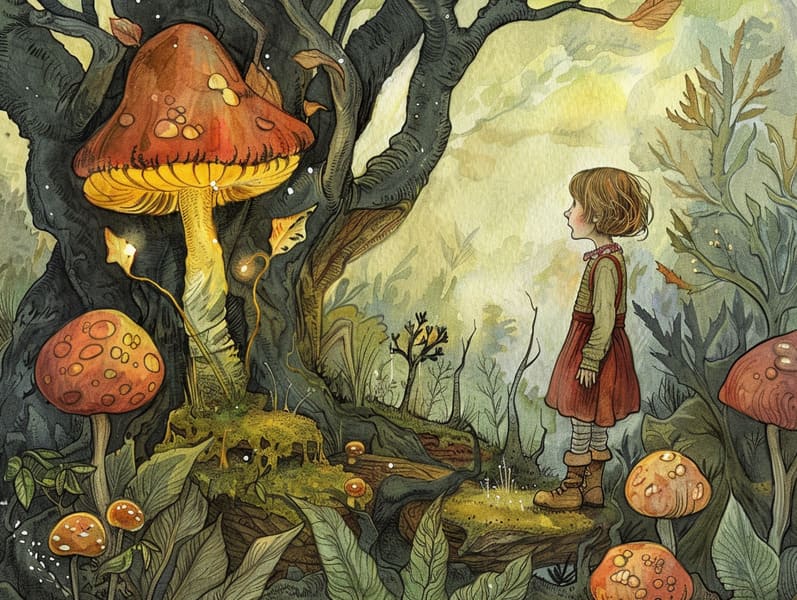
Nightfall is a special time for parents and children. It’s a occasion to relax, huddle together, and experience the beauty of stories.
For decades, sleep stories for kids have been a esteemed legacy, offering more than just a way to go to sleep. They provide an means for bonding, learning, and fostering inventiveness.
Why Bedtime Stories are Important
Evening stories for little ones serve more than a way to wrap up the day. They play a significant role in a child’s evolution and in building the family rapport. Here’s why they are beneficial:
1. Shared Moments: Nightly storytelling creates a special loving connection between caregivers and children. It’s a moment of closeness that helps children feel loved and secure.
2. Language Acquisition: Hearing tales helps children develop their communication skills. They pick up new words, understand sentence structures, and refine their attention and grasping abilities.
3. Creative Development: Kids' stories lead them to enchanted worlds, promoting imagination. They see characters, settings, and adventures, which powers their creative thinking.
4. Emotional Growth: Bedtime narratives often involve characters facing difficulties and states. These narratives help kids recognize and manage their own feelings, fostering emotional growth.
5. Mental Development: Listening to a tale helps children develop mindfulness, remembering, and analytical skills. They improve to follow scripts, remember elements, and deduce results.
How to Incorporate Bedtime Stories
Establishing a bedtime habit that features storytelling is manageable and worthwhile. Here’s how to make it a treasured part of your bedtime habit:
1. Choose a Comfortable Spot: Identify a relaxing place where you and your child can huddle together without noise. A comfortable bed or a relaxing reading nook works ideally.
2. Establish a Routine Time: Choose a routine time each night for bedtime reading. Consistency helps children be prepared and makes the custom easier to follow.
3. Pick Age-Suitable Stories: Identify tales that are right for your child’s maturity. Preschoolers might be engaged by illustrated books with easy plots, while school-age kids may prefer detailed stories with more complex plots.
4. Bring the Story to Life: Try to the tale feel vivid by adding different character voices, adding special sounds, and encouraging your child to participate. Ask questions about the story to involve them.
5. Create a Soothing Environment: Reduce the lights, use gentle voices, and create a soothing environment to help your child calm down.
Where to Find Bedtime Stories
There are numerous choices where you can find fantastic bedtime stories for children. Here are some ways to consider:
1. Children’s Literature: Try your area library or bookstore to find a diverse selection of bedtime stories for kids. Going through the aisles together can be a entertaining activity that also lets children to find stories that interest them.
2. Online Resources: There are many places online that offer free bedtime stories. Sites like Storyberries provide a variety of short stories for kids that you can download. These sites are great for finding new and interesting stories without cost.
3. Audio Stories and Apps: For nights when you’re too worn out to read, use audiobooks or storytelling apps. These can provide a gentle reading to read your child a story, ensuring they still get their bedtime story fix. Apps often offer interactive elements that can keep them engaged further.
4. Custom Stories: Create your own stories tailored to your child’s interests. Personalized stories can be especially engaging and meaningful. You can get your child in the narration process, making them a part of the adventure.
Positive Aspects of Short Stories
Short stories for kids are particularly helpful for bedtime. They provide all the positives of longer stories but are bedtime stories for kids more brief, making them perfect for calming down before sleep. Here’s why short stories are a great choice:
1. Simple to Understand: Brief tales are uncomplicated and easy for children to follow, even after a long day. They can readily grasp the line and enjoy the story without becoming uninterested.
2. Immediate Interest: Quick narratives rapidly engage children, grabbing their concentration and fascination. This makes them great for keeping bedtime customs effective yet enjoyable.
3. Diverse Options: Short stories make possible for variety in your bedtime narrative. You can select a different story each night, keeping the practice fresh and exciting for your child.
4. Efficient Use of Time: For busy parents, brief tales are a easy way to make sure children still get their nightly dose of storytelling. They fit well into a hectic schedule while still offering the full positives of a bedtime story.
The Pleasure of "Read Me a Story"
The simple phrase, “Read me something,” can unlock a world of magic for children. Reacting to this request not only addresses a child’s want for attention and engagement but also forms lasting times. Here’s why it’s wonderful:
1. Tie: Telling tales to your child strengthens a deep emotional relationship. It’s a time for closeness, sharing, and bonding.
2. Custom: Developing a bedtime story custom creates a beloved tradition that children expect every night. It’s a routine that can be handed down through generations.
3. Joint Growth: As you read, you’ll observe your child’s development and development. Their questions, reactions, and understanding of the stories develop, offering insights into their developing minds.
4. Safe Space: Bedtime stories provide a safe space for children to navigate emotions, face fears, and find comfort in the reliable presence of a parent.
The Last Word
Children’s bedtime stories are a powerful tool for developing a child’s progress and establishing unforgettable events of closeness.